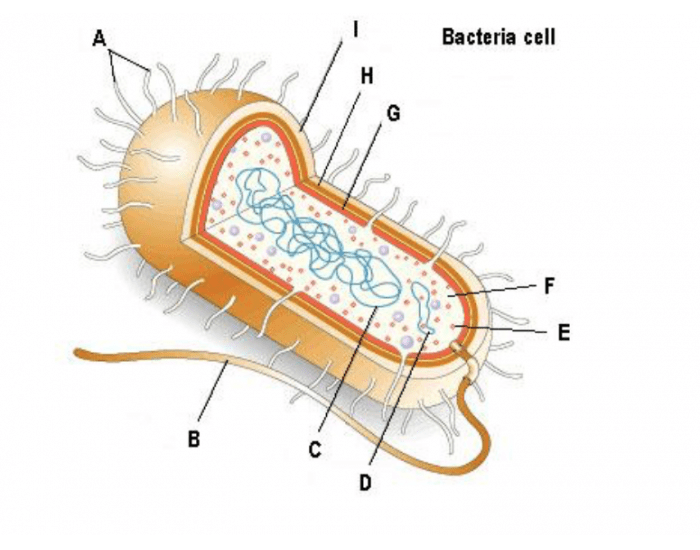 Label A
Label A
Pili
These tiny structures make proteins for the cell.
ribosomes
True or False? Bacteria are prokaryotes.
true
True or False, Not all bacteria are harmful.
true
A dish used to grow bacteria in the lab.
petri dish

Label B
Flagellum
This structure stores extra DNA in small circular form, sometimes carrying resistance genes.
plasmids
One way bacterial cells are different from plant cells.
No cell wall, no chloroplasts
What type of medicine is used to kill or slow bacteria?
antibiotics
The nutrient material placed inside Petri dishes for bacteria to grow.
clue: A___
- Jelly
Agar

Label C
nucleoid
The fluid inside the cell where chemical reactions happen.
cytoplasm
Unlike animal cells, bacteria do not have this membrane-bound “control center.”
nucleus
no
What safety equipment must you always wear when handling bacteria in the lab?
gloves and safety goggles

Label G
peptidoglycan/cell wall
This long tail helps bacteria move in liquids.
flaggelum
One similarity between bacteria and eukaryotic cells.
Both have DNA, ribosomes, and a cell membrane.
Overuse of antibiotics can cause this problem.
antibiotic resistance, mutations
Why do scientists use control groups when testing bacterial growth?
For comparison to ensure results are valid
Label H
slime layer/capsule
Without this inner boundary layer, bacteria would not be able to control materials entering and leaving.
plasma membrane
Which is bigger on average, a bacterial cell or a human body cell?
human body cell.
What part of the body has the largest community of helpful bacteria?
the gut, intestines
Why do scientists use aseptic technique when handling bacteria?
Aseptic technique: safety precautions
to prevent contamination